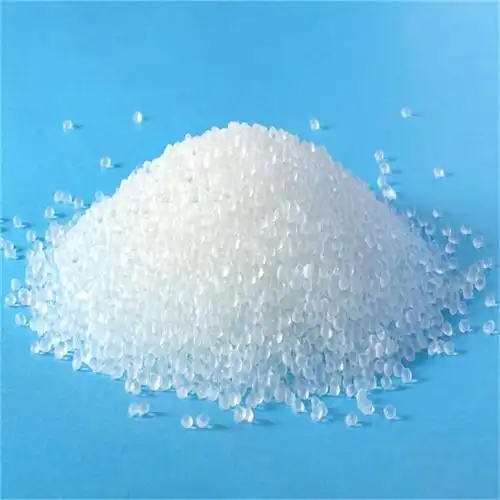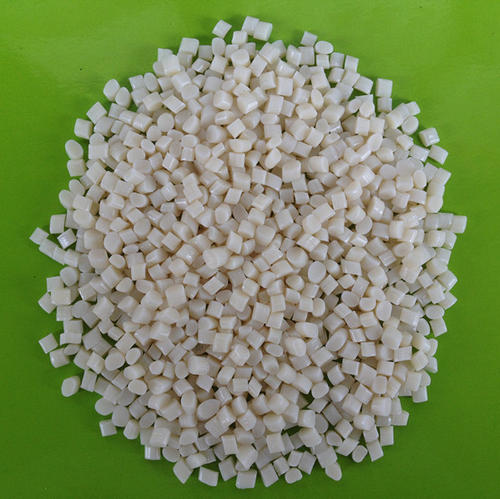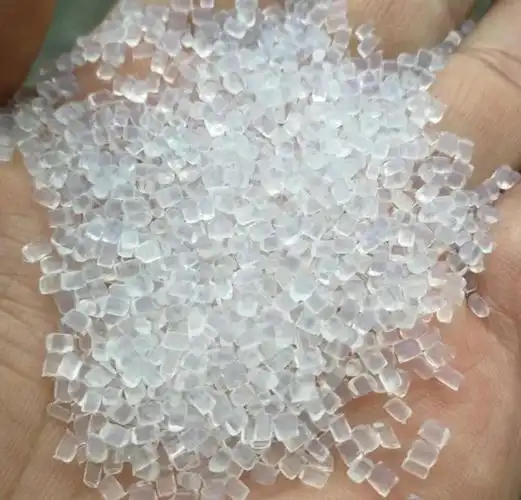In the vast field of material science, TPE (thermoplastic elastomer) and EPDM (ethylene propylene diene monomer) are both important players. They each have unique properties and application areas, but many people are often confused when choosing between them. As an expert with many years of experience in the materials industry, today I would like to take a deep dive into the differences between TPE and EPDM materials, hoping to help you make a more informed decision when choosing materials.
1. Differences in Material Essence and Structure
TPE Materials
TPE, short for Thermoplastic Elastomer, is a material that combines the high elasticity, strength, and resilience of rubber with the processability of thermoplastics. It is typically formed by modifying thermoplastic plastics (such as polystyrene, polypropylene, etc.) with rubbers (such as butadiene rubber, isoprene rubber, etc.) through physical or chemical methods like blending, grafting, or block copolymerization. This special structure endows TPE with both the processability of plastics and the elastic properties of rubber.
From a microscopic perspective, the molecular chains of TPE are usually composed of alternating hard and soft segments. The hard segments form physical cross-linking points at room temperature, giving the material a certain degree of strength and hardness, while the soft segments impart good elasticity and flexibility. This unique molecular structure allows TPE to flow like plastics when heated, facilitating easy processing and molding, and yet recover its elasticity like rubber upon cooling.

Ethylene Propylene Diene Monomer (EPDM) Rubber
EPDM rubber is a terpolymer of ethylene, propylene, and a non-conjugated diene. Its molecular chains are mainly composed of ethylene and propylene monomer units, while the non-conjugated diene provides cross-linking points, enabling EPDM to form a three-dimensional network structure through vulcanization and other processes, thus exhibiting excellent rubber properties.
Unlike TPE, EPDM is a traditional rubber material, and its molecular chains are interconnected through chemical cross-linking to form a stable network structure. This structure grants EPDM high elasticity, excellent aging resistance, and chemical corrosion resistance at room temperature. However, due to the presence of chemical cross-linking, EPDM requires complex processes like vulcanization during processing, which to some extent limits its processing efficiency and flexibility.
2. Performance Comparison
| Performance Indicator | TPE | Ethylene Propylene Diene Monomer (EPDM) Rubber |
|---|---|---|
| Hardness Range | Wide, ranging from Shore A0 to Shore D70 | Relatively narrow, generally from Shore A40 to Shore A90 |
| Tensile Strength | High, but generally lower than that of vulcanized EPDM | High after vulcanization, reaching 10-25 MPa |
| Elongation at Break | High, typically ranging from 300% to 1000% | High, with elongation at break reaching 500%-800% after vulcanization |
| Resilience | Good, but affected by temperature to some extent | Excellent, maintaining good resilience over a wide temperature range |
TPE: TPE has a wide hardness range that can be adjusted according to needs. Its tensile strength and elongation at break are both high, but generally lower than those of vulcanized EPDM. TPE exhibits good resilience, but its resilience may be affected under high or low-temperature conditions.
EPDM: EPDM has a relatively narrow hardness range, but its tensile strength and elongation at break after vulcanization are both excellent. Its resilience remains stable over a wide temperature range, making EPDM outstanding in applications requiring high elasticity and aging resistance.

Aging Resistance
TPE: The aging resistance of TPE is greatly influenced by its formulation and processing technology. Generally, TPE materials containing antioxidants, UV absorbers, and other additives exhibit better aging resistance. However, compared to EPDM, TPE’s performance may gradually decline when exposed to outdoor or harsh environments for extended periods.
EPDM: EPDM is renowned for its excellent aging resistance. The ethylene and propylene monomer units in its molecular chains possess high chemical stability, enabling EPDM to maintain good physical and chemical properties even when exposed to ultraviolet light, ozone, high temperatures, and other harsh environments for long periods.
Chemical Corrosion Resistance
TPE: The chemical corrosion resistance of TPE varies depending on its formulation and base material. Generally, TPE materials containing polar groups exhibit good resistance to polar solvents but poor resistance to non-polar solvents. Additionally, TPE may swell or degrade when in contact with certain chemicals.
EPDM: EPDM has excellent chemical corrosion resistance, particularly good resistance to non-polar solvents and most acids, alkalis, and salts. This makes EPDM widely used in fields such as chemicals, petroleum, and pharmaceuticals.
Processability
TPE: TPE has excellent processability and can be molded through various processing methods such as injection molding, extrusion, and blow molding. It has a wide processing temperature range and does not require complex processes like vulcanization, resulting in high processing efficiency and low cost. Additionally, TPE can be blended or compounded with other materials to prepare materials with special properties.
EPDM: The processability of EPDM is relatively poor. Due to the stable network structure formed by chemical cross-linking between its molecular chains, EPDM requires complex processes like vulcanization during processing. The vulcanization process is not only time-consuming and labor-intensive but also requires strict control of parameters such as vulcanization temperature, time, and pressure to ensure material performance. Additionally, EPDM has a narrow processing temperature range and high requirements for the precision and stability of processing equipment.

3. Differences in Application Areas
Applications of TPE
Automotive Industry: TPE is widely used in the automotive industry, such as in automotive seals, mudguards, floor mats, and interior trim parts. Its excellent processability and good physical properties enable TPE to meet the high requirements of the automotive industry for materials.
Electronic Products: Due to its good elasticity and insulating properties, TPE is also widely used in electronic products, such as phone cases, earphone cables, and data cables. These products require materials with good flexibility and wear resistance to protect internal electronic components from damage.
Medical Devices: TPE is widely used in the medical device field due to its non-toxic, odorless, and good biocompatibility. It is used in products such as infusion tubes, syringe seals, and surgical gloves. These products require materials with good biosafety and hygiene properties.
Sports Goods: TPE is also widely used in sports goods due to its good elasticity and wear resistance, such as in yoga mats, shoe soles, and fitness equipment handles. These products require materials that can provide good support and cushioning effects to protect athletes’ bodies.
Applications of EPDM
Construction Industry: EPDM is mainly used in the construction industry for waterproof membranes, seals, and door and window seals. Its excellent aging resistance and chemical corrosion resistance enable EPDM to maintain long-term waterproofing and sealing effects.
Automotive Industry: EPDM is also widely used in the automotive industry, such as in automotive tires, seals, and shock absorbers. Its high elasticity and aging resistance make EPDM suitable for meeting the high requirements of the automotive industry for materials.
Wires and Cables: Due to its good insulating properties and aging resistance, EPDM is also widely used in the wire and cable industry. It is often used as the insulation layer or sheath layer of wires and cables to protect them from external environmental influences.
Chemical Industry: EPDM is widely used in the chemical industry due to its excellent chemical corrosion resistance. It is often used as seals for chemical equipment and pipeline linings to prevent chemical leakage and corrosion.

4. Considerations of Cost and Environmental Friendliness
Cost
TPE: The cost of TPE varies depending on its formulation and processing technology. Generally, the raw material cost of TPE is relatively low, and its processing efficiency is high with low cost. Therefore, in applications requiring mass production and not having particularly high requirements for material performance, TPE is often a more cost-effective choice.
EPDM: The cost of EPDM is relatively high. This is mainly due to its high raw material cost and the complex and time-consuming vulcanization and other processing processes. Therefore, in applications requiring high-performance materials and not being particularly sensitive to cost, EPDM may be a better choice.
Environmental Friendliness
TPE: TPE is an environmentally friendly material. It can be recycled and reused to reduce the impact of waste on the environment. Additionally, TPE does not produce harmful substances during production and does not release toxic gases or pollutants during use. Therefore, TPE has broad application prospects in today’s increasingly stringent environmental requirements.
EPDM: EPDM is also a relatively environmentally friendly material. Although some volatile organic compounds (VOCs) may be produced during its vulcanization process, the emission of VOCs can be significantly reduced by optimizing the vulcanization process and using environmentally friendly vulcanizing agents. Additionally, EPDM does not release toxic gases or pollutants during use and can be recycled and reused to reduce the impact of waste on the environment.
5. Selection Suggestions
When choosing between TPE and EPDM, we need to comprehensively consider factors such as material performance, cost, environmental friendliness, and application scenarios. Here are some specific selection suggestions:
If high requirements are placed on the material’s elasticity, aging resistance, and chemical corrosion resistance, and cost is not a particularly sensitive factor, then EPDM may be a better choice. Especially in fields such as construction waterproofing, automotive tires, and chemical seals, the performance advantages of EPDM are more pronounced.
If high requirements are placed on the material’s processability, cost, and environmental friendliness, and the requirements for material performance are not particularly stringent, then TPE may be a more cost-effective choice. Especially in fields such as automotive interior trim, electronic products, and medical devices, the widespread application of TPE has already proven its superiority.
In practical applications, we can also consider compounding or blending TPE and EPDM to prepare materials with special properties. For example, blending TPE with EPDM can produce materials that combine the processability of TPE with the aging resistance of EPDM.

Related Q&A
Q1: Which is more environmentally friendly, TPE or EPDM?
A1: Both TPE and EPDM are relatively environmentally friendly materials. TPE can be recycled and reused to reduce the impact of waste on the environment and does not produce harmful substances during production. Although some VOCs may be produced during the vulcanization process of EPDM, their emission can be significantly reduced by optimizing the vulcanization process and using environmentally friendly vulcanizing agents. Therefore, when choosing, we can comprehensively consider based on specific application scenarios and environmental requirements.
Q2: Which is more suitable for automotive seals, TPE or EPDM?
A2: Both TPE and EPDM can be used for automotive seals. TPE is widely used in automotive interior trim parts due to its good processability and cost-effectiveness. EPDM, on the other hand, excels in automotive tires, seals, and other fields due to its excellent aging resistance and chemical corrosion resistance. Therefore, when choosing, we can comprehensively consider based on the specific requirements of automotive seals (such as aging resistance, chemical corrosion resistance, cost, etc.).
Q3: Can TPE and EPDM be compounded or blended?
A3: Yes, TPE and EPDM can be compounded or blended. By compounding or blending, we can prepare materials that combine the processability of TPE with the aging resistance of EPDM. This composite material has broad application prospects in fields such as automotive, construction, and electronics. However, when compounding or blending, we need to consider factors such as material compatibility and processing technology to ensure the stable and reliable performance of the composite material.
Q4: Is there a big price difference between TPE and EPDM?
A4: The price difference between TPE and EPDM varies due to factors such as raw material cost, processing technology, and market supply and demand. Generally, the cost of EPDM is relatively high, mainly due to its high raw material cost and the complex vulcanization and other processing processes. The raw material cost of TPE is relatively low, and its processing efficiency is high with low cost. Therefore, when choosing, we can comprehensively consider based on specific application scenarios and cost budgets.
Q5: What are the differences in the applications of TPE and EPDM in the medical device field?
A5: In the medical device field, both TPE and EPDM have applications. TPE is often used to prepare products such as infusion tubes, syringe seals, and surgical gloves due to its non-toxic, odorless, and good biocompatibility. EPDM, on the other hand, is also used in some special components of medical devices (such as seals that are long-term exposed to chemicals) due to its excellent aging resistance and chemical corrosion resistance. However, since medical devices have extremely high requirements for material safety and hygiene properties, in practical applications, we need to choose appropriate materials based on specific product requirements and regulatory standards.





